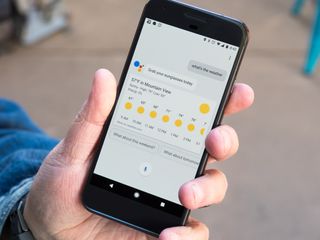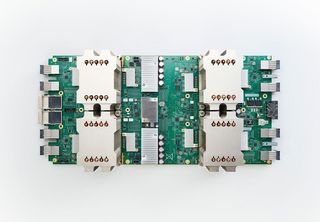Google I/O 2017: Assistant and its AI is what's next for all the things

Android O and 2 Billion users is big news, but the real story from I/O 2017 is how everything will become a vessel for Google Assistant and the artificial intelligence that powers it.
Google Assistant looks and feels like the natural successor to Google Now. In a way it is, but it's also so much more. At Google I/O 2017 we saw that Google Assistant is it's own platform, and one that might be bigger than anything else Google has built.
The front end for Assistant can be in your phone, or your TV or and appliance on your coffee table or in a cardboard box from an electronic hobbyist magazine. While that might be the way to interact with Assistant, the service itself lives and breathes in the cloud running on Google's crazy new TensorFlow-powered Google Cloud TPUs.

Assistant first came to our phones inside the Allo app. We had seen the demo ot Google I/O 2016, but at first it was a little disappointing. That's changed, and here we are a year later with a very smart Assistant that can run anywhere with an internet connection and a Python (development language) interpreter. It's also branched out into Google Lens, Google Photos, Google Job Search and Tango and Google Play Protect and just about anywhere that a computer's special blend of logic can work out how, why or where. All of this is tied together into an AI, and it's Google's newest platform.
It also has the chance to be Google's most important and biggest platform, and eventually encompass and devour everything else the company has to offer. We already heard how Google's neural network was programmed so that it could build it's own and better neural network, so the functions and features are all there. Everything Google does could benefit from some smarter machinery, and the machinery is ready. Soon we'll have assistant in our Gmail.
Google literally announced the end of the world. Neural nets that build better neural nets. #IO17 pic.twitter.com/R4V0A85FM1Google literally announced the end of the world. Neural nets that build better neural nets. #IO17 pic.twitter.com/R4V0A85FM1— Jerry @ I/O 🛴 (@gbhil) May 17, 2017May 17, 2017
The most visual, and therefore most exciting, news is in Google Lens. It's definitely the sleeper hit from I/O 2017, and something that will continue to develop until it becomes part of the everyday experience. The service that can use the power of the cloud to log you onto a Wi-Fi network or tell you about the flower that you're seeing. We're looking forwards to seeing Google Lens, but we're also looking forwards to what Google Lens learns for the next thing.
And that's what we really saw at I/O 17; the future. Google I/O has slowly moved away from announcements of shiny things and become more about what those things can do, and how it makes a difference. The things we buy that use it will come and go, but what we saw at Google I/O is the start of what's next.
Get the top Black Friday deals right in your inbox: Sign up now!
Receive the hottest deals and product recommendations alongside the biggest tech news from the Android Central team straight to your inbox!

Jerry is an amateur woodworker and struggling shade tree mechanic. There's nothing he can't take apart, but many things he can't reassemble. You'll find him writing and speaking his loud opinion on Android Central and occasionally on Threads.